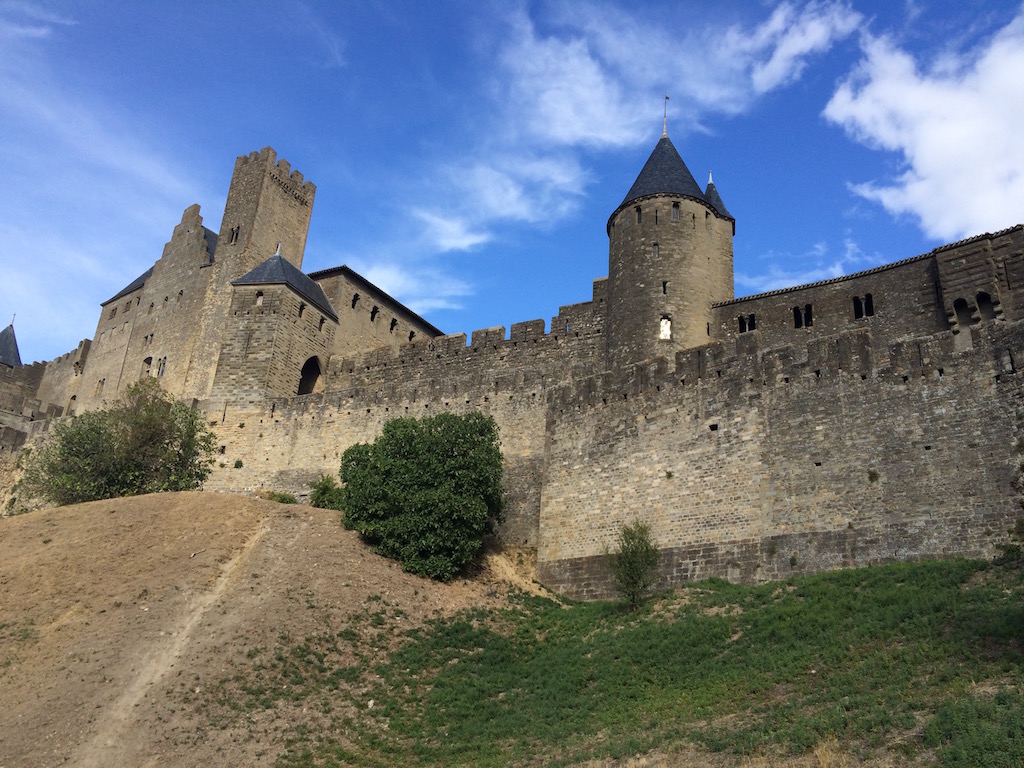 When Pierre sent me the list of places he had found for us to stay in southern France for the next leg of our nomadic journey, I looked them up and laughed. Many of them were spacious and quite nice, but they were all in tiny villages seemingly in the middle of nowhere!
When Pierre sent me the list of places he had found for us to stay in southern France for the next leg of our nomadic journey, I looked them up and laughed. Many of them were spacious and quite nice, but they were all in tiny villages seemingly in the middle of nowhere!
After spending three weeks at our in-laws’ beautiful chalet in the gorgeous mountain resort town of Les Diablerets in Switzerland, without Wifi, I might add, I had developed severe cabin fever, amassing enough pent up energy to fuel a rocket. I didn’t know if I could handle yet another remote location right away.
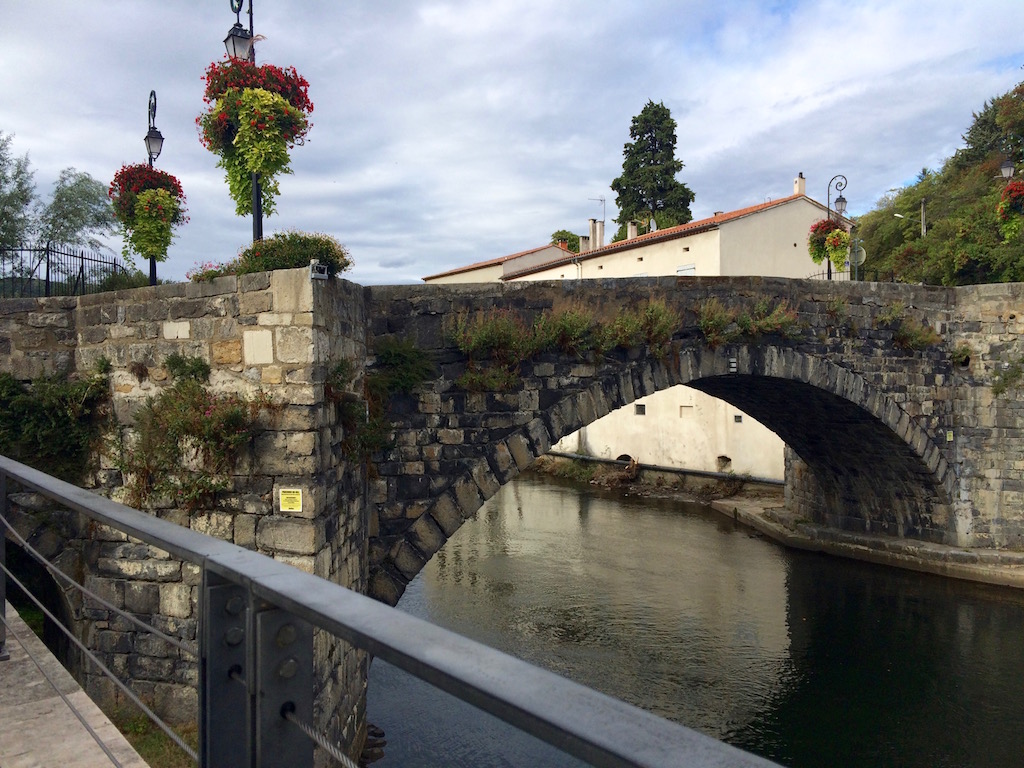
I know why Pierre had picked those places, though. We had chosen southern France partly for the good weather, partly so the kids and I could finally become fluent in French, and mostly because France is a lot more affordable than Pierre’s home country of Switzerland. We were still operating on a travel budget meant for Southeast Asia, after all, and the places Pierre had found fit that budget now that summer season was over. If we looked at places in or on the outskirts of major cities, either rents doubled or spaces got halved (or quartered!).
So, I decided to suck it up and make it work, but I was worried. I worried there would be no French classes to take, no day care or drop-in activities for the kids (to give us much needed breaks!), no place to rent bikes. I worried there would be no communities to engage in and insufficient cultural offerings to take advantage of. As a family, we had spent the last 20 months together, 24/7!, and really needed some distractions outside of family life.
I Was So Wrong About France!
Well, turns out I was so, so wrong! In my blind fear of being trapped and bored in a small town, a few important points never occurred to me. First, it’s France, which nurtures and protects its culture well! In fact, culture and community are part of the French identity, and history, and they take great pride in that. Our tiny village, with a population of 450, may have only one restaurant, one small store, one cafe, and one brewery (brand new!), but it also has its own 12th century castle, a museum, and an art studio.
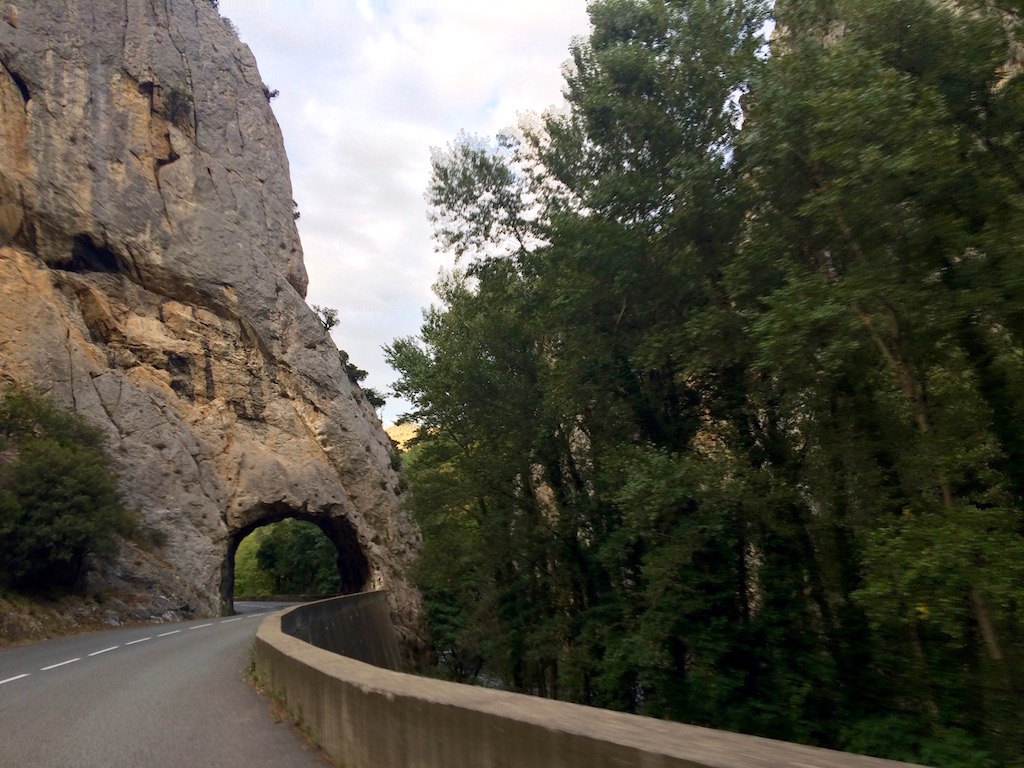
Second, although our village is tiny, it is not remote. It connects with a spattering of other villages across the region to form a network of communities that work together to provide an abundance of services and activities for its occupants. This means that if our village doesn’t have something, like a large grocery store or a school or a sports stadium, that’s OK, a bigger village down the road will have it. It also means that there’s always something going on in one of the villages every day: open-air markets, concerts, festivals, dance lessons, sports classes, conferences, and more.
Villages are anywhere from 10 to 20 kilometers apart, on average, and major cities are only about an hour or so drive away. For us, here in the department of Aude in the Midi-Pyrenees, those major cities are Carcassonne, Perpignan, and Toulouse. Our next “big” village is Quillan, which has everything we need—plus it’s super cute and quaint—and is just down the road from us.
Third and finally, France is not some obscure, off-the-beaten path destination. It’s France! Millions of tourists have scampered across every kilometer of this country, and some have chosen to stay. Our area seems especially popular with British expats, mostly (but not exclusively) the retired set. They must love the sunny, California-like weather, the wines, the food, the sense of community, and the enormous offering of cultural activities.
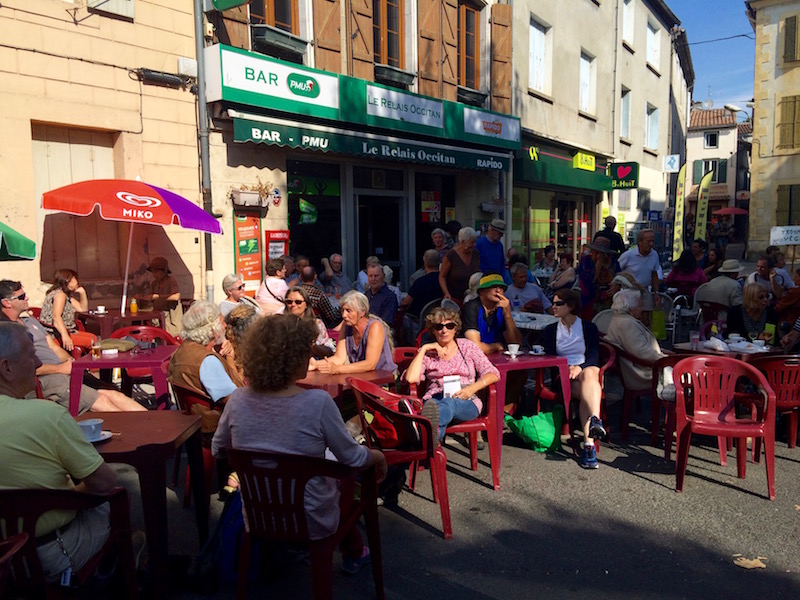
The locals are gentle, laid back people, full of smiles and with no visible signs of stress. Over an espresso, I commiserate with a resident from Britain, who’s lived here for 16 years, about going against the status quo: “No, I told all my friends, you do not HAVE to own a home. There is another way to live,” he said. The owners of the place we are renting themselves traveled the world with their two young kids on a boat for four years. These are our kind of people.
The vibe in this region is relaxed and distinctly Bohemian. Locals even dress in a hippy-chic style, many with elephant print or fisherman pants (so common in Thailand), along with flowing scarves. Their dress along with some of their views remind me of liberal leaning enclaves in Marin County, California, close to where we’re from.
Meeting New Friends
During our first week we walked to the nearby lake, which we learned is what our village is known best for, and found it busy. In early September people were enjoying the last days of summer before returning to work and school. People swam, kids played at the playground, groups sat at the tables of a pop-up snack bar and played cards for hours.
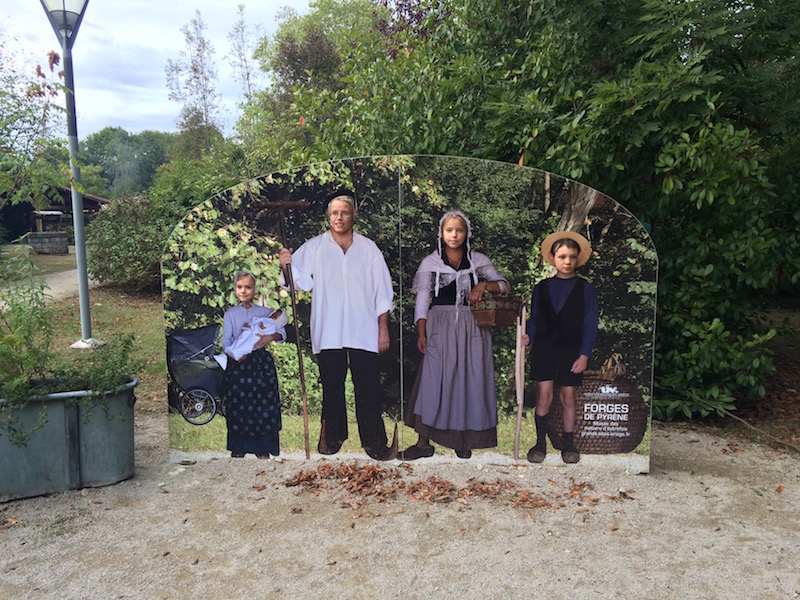
A local farmer named Francisco had set up an impromptu fruit stand in the parking lot there. He rotates (randomly, as it turns out) from village to village over the course of a week, as does a butcher in his truck and a pizza company that has several trucks circulating the villages. It’s at this fruit stand where we met Sarka and Mirella, along with their young kids, and became fast friends.
Sarka is Czechian, but she has been living in the area for 12 years and is married to a Frenchman. She has four children, ranging in ages from 6 to 17, and four step-kids. She remembers what it was like coming here for the first time, not speaking the language, and is kind and patient with me and my French. Mirella is from Holland and can speak English but respectfully sticks to French for my sake. Her youngest is a two-year old blue-eyed, blond boy with the cutest fat cheeks, whom she still breastfeeds, as do other mothers of toddlers in this community.
Through them we learned that the area is popular with homeschoolers, like us. Sarka connected us with a couple of online homeschooling newsgroups so that we could learn about local events for the kids, of which there were many!
Plenty to Do in French Villages
Between the online newsgroup, our new friends, the tourist office in Quillan, and talking to locals, we discovered a plethora of things to see and do, both touristy and in the realm of day-to-day life. A sampling of these includes:
- Castles! The department of Aude boasts over 10 castles from the famed 12th century Cathare era! Some of them put on fun medieval-style events, like the castle in Chalabre.
- Les Journees du Patrimoine (Heritage days). For one weekend each year, France makes many of its museums and cultural venues available to the public for FREE, and we happened to be there at the right time. For this special weekend, we spent Saturday exploring the huge, extraordinary citadel in Carcassonne, which is a world heritage site, and enjoying the restaurants and shops along its cobblestone streets. On Sunday, we drove the opposite direction to explore the Forges de Pyrenees near Foix and learned about life around the turn of the 20th century, with plenty of exhibits and live demonstrations.
-
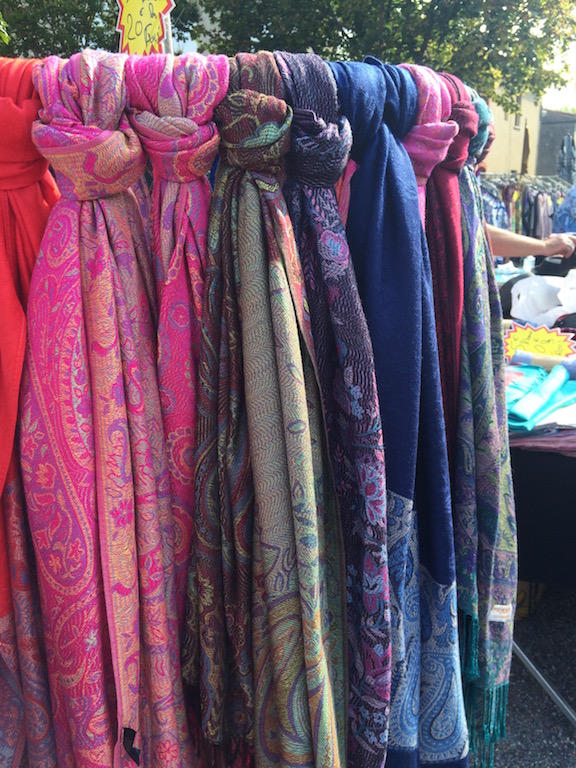
At the market in Esperaza Lively, local markets! A number of villages have weekly farmer’s markets that include more than just produce. Some have live music and sell everything from clothing to dishes. The most popular in this area is the Sunday market in Esperaza, which includes live music and vendors selling produce, olives, cheeses, meats, breads, raw food platters, clothes, dishes, and all kinds of other wares. I got hung up at the multiple tables piled high with gently used sweaters that were selling for 3 Euros a pop. We had only brought with us clothes for Southeast Asia. We needed some for winter! Happy people socialized at the cafes, which spilled onto the square. For a list of area markets, see this link.
- Local life in Quillan. Through friends, we learned of numerous activities in the bigger village down the road. As a result, we signed our son up for FREE weekly soccer practice, and have the option to sign up our kids for ongoing gymnastics, dance, and rock-climbing classes. We also learned of the English Library in town and became friends with its owners, Steven and Patrick.
- Live music. At the tourist center in Quillan and on billboards at large grocery stores, we learned of numerous concerts in the area, from a weekly jazz festival in the coastal city of Narbonne to the classical music events of the crystal bowl at locations throughout the region. Unfortunately, with kids, these were harder to do. We did get to see one of the weekly live bands at the brewery, though! That was nice.
- The ludothèque in Couiza. I didn’t even know what a ludothèque was, but basically it’s a playhouse or officially a community “toy library”, a place where young kids (and adults) go to socialize, play, and participate in board games with others. Sarka took our kids there and they had a blast!
- Tedx conference in the village of Limoux. Sadly, we missed this event! It was advertised as an all-day fun and games festival for kids, but a look at their program revealed that for the grown-ups, there were back to back talks on education and learning, particularly for the challenged child. As our son has ADHD (or TDAH, as it’s referred to in France), I was interested to know there was a center nearby for supporting kids like him, although I’m sure their approach would be very different than in the U.S.
-
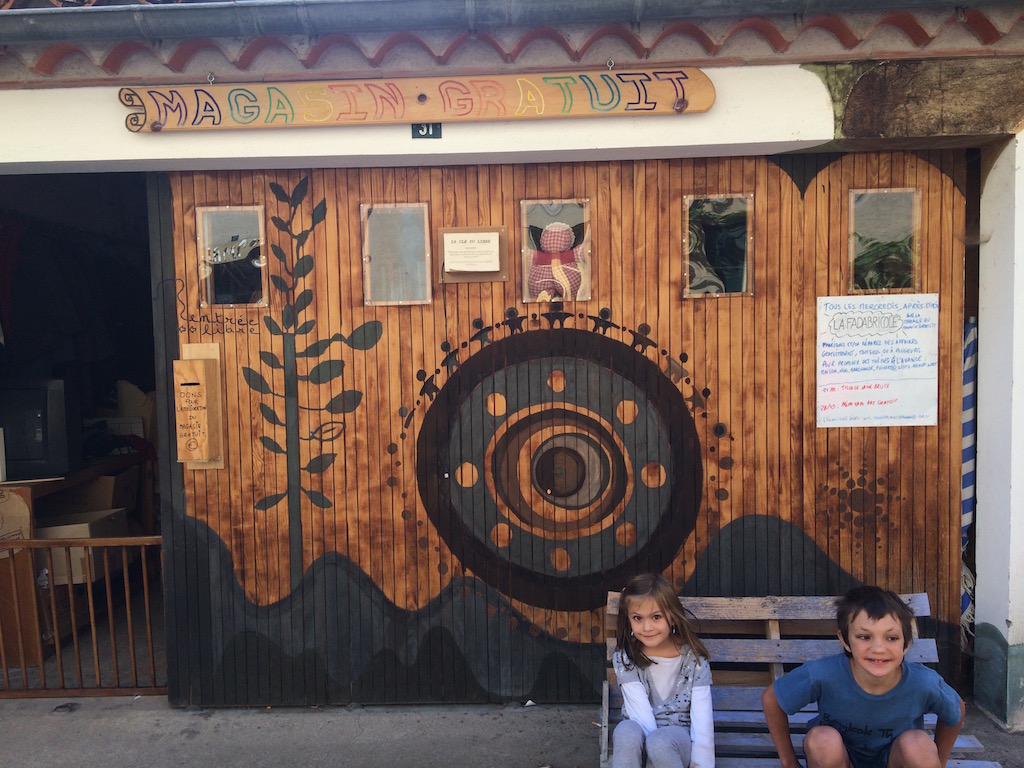
Free Store Magasin Gratuit in Puivert. In the village of Puivert, there is a Magasin Gratuit, or “Free Store”, and it is a good representation of what some of the local culture is about, which is: a kind of good will, Burning Man ethics about giving and sharing. The shop looks like a thrift shop, mostly carrying clothes and shoes, but also books, dishes, and other knick-knacks. Locals constantly drop off items while others stop by to shop. Taking items to resell at local vide-greniers (or literally, emptying the attic) was OK as long as you didn’t do it when their inventory was low. (We met a woman there who came daily to do just that: collect items she could resell at those neighborhood yard sales.) I picked up a great pair of jeans there to ward against the coming cold, and Lily got a small bicycle and pair of rain boots.
Related to the store is a “borrowing” section. With a 50 Euro deposit, we borrowed three bicycles to last us our stay. When we return them, we’ll get our 50 Euros back. How cool is that?
My Worries, Laid to Rest
So, about satisfying all those needs we came here with… We learned of a possible school/day care for our daughter and in the meantime, there are plenty of drop-in classes for the kids and anyway, they have new friends. Although there is no university nearby, I discovered plenty of people and small businesses online who offered French classes. The area includes a large system of dirt trails on which to jog, hike, and bike, and there are an endless list of activities. If still we get bored, we are not far from big cities. Already we’ve visited Carcassonne and Perpignan; Toulouse and Narbonne are next on the list.
Surprisingly, we are enjoying small town France! But will we stay? Eventually, we will move on. That’s what travel nomads do: we keep moving, we keep discovering.
Practical Information
For more information on the Aude department of the southeastern region of France and all it has to offer, see this link.
For hotels in Carcassonne, Perpignan, and Toulouse, please see those links.
This blog post, including photos, is copyrighted (c) 2016 by Cindy Bailey Giauque and is an original publication of www.mylittlevagabonds.com. Please join us on Twitter and Facebook. Happy travels!